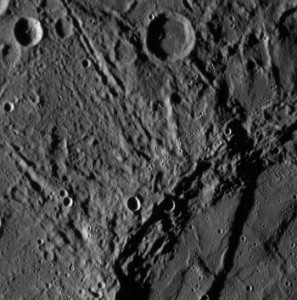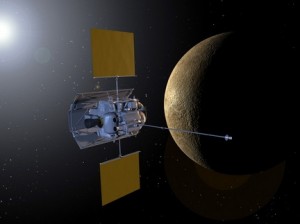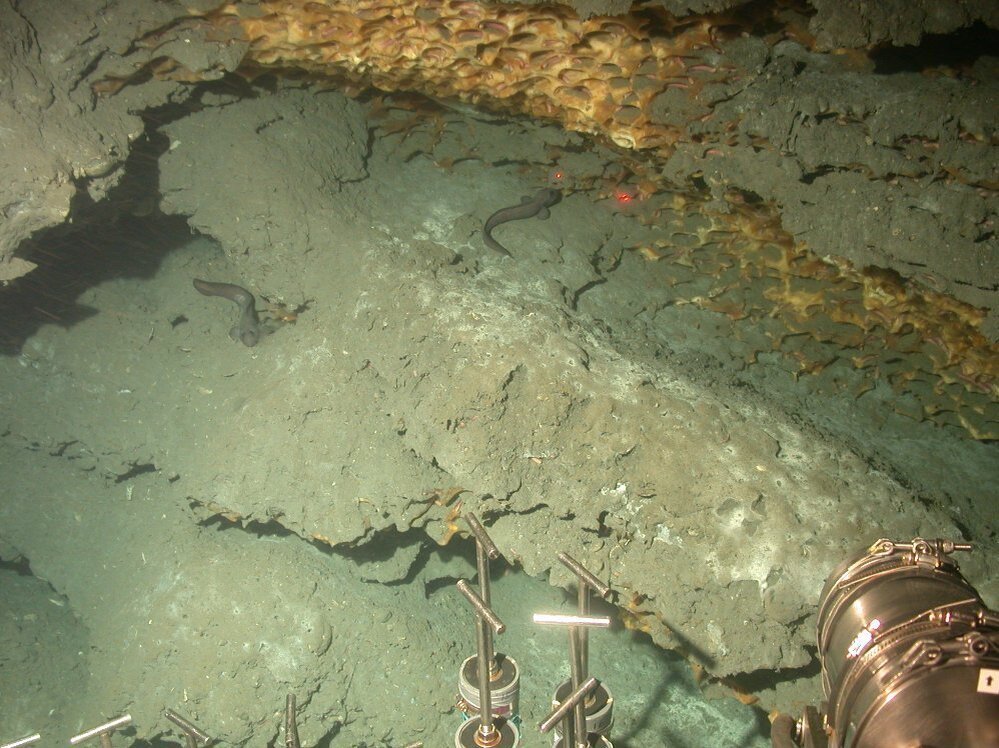Humanity has just reached another milestone in space exploration. Yesterday, on March 17, NASA’s MESSENGER probe entered orbit around Mercury becoming the first spacecraft to ever do so.
MESSENGER (actually short for Mercury Surface, Space Environment, Geochemistry and Ranging) was launched almost 7 years ago in August of 2004. It was designed to examine the magnetic field around mercury, as well as chemical composition and geology of the surface.
Since then, MESSENGER has made three flybys past Mercury and has made some interesting discoveries that have puzzled scientists for years.

Evidence of Volcanic activity on the surface of Mercury
Back in July of 2008, MESSENGER made the startling discovery of water present in Mercury’s exosphere (the uppermost later of the atmosphere). It also found evidence of extensive volcanic activity on Mercury’s surface. Previously, scientists believed that the volcanic gases would have long ago exited Mercury or had been absent at its formation.
MESSENGER’s new mission will have it begin to throughly examine the surface for the chemical signatures of these gases with an array of seven instruments (set to be activated on March 24). The probe will also study the presence of water on Mercury and also examine the planet’s core.

MESSENGER's gravity assist maneuvers
What made MESSENGER’s voyage to Mercury interesting were some of the challenges that scientists had to overcome. Normally, a probe approaching the planet would become too accelerated due to the force of the Sun’s gravity and fly past the planet before it could maintain orbit. MESSENGER had to overcome this by using a series of gravity assist maneuvers to slow it down. These maneuvers utilize the gravity of a planet to change the path of the spacecraft. If you’ve ever seen the movie “Armageddon”, this was like the scene where the spaceship did the “roadrunner thrust move” around the Moon. MESSENGER had to utilize the gravity from Mercury, Venus and Earth to perfect its trajectory to orbit the planet.
What’s truly remarkable is that these series of gravity assisted moves mean that MESSENGER has traveled 7.9 billion kilometers through space since 2004.
The other challenge for scientists was thermal damage due to Mercury’s high surface temperatures. They solved this by making MESSENGER have a highly elliptical orbit around the planet. The trajectory takes the probe within 200 km of the surface then 15,000 km away, presumably when the temperatures are hottest. One of these cycles takes 12 hours.
The probe’s first set of measurements are scheduled to be sent to Earth on April 4. Who knows what’s waiting to be discovered beneath the surface of Mercury!
The original article can be found here.








